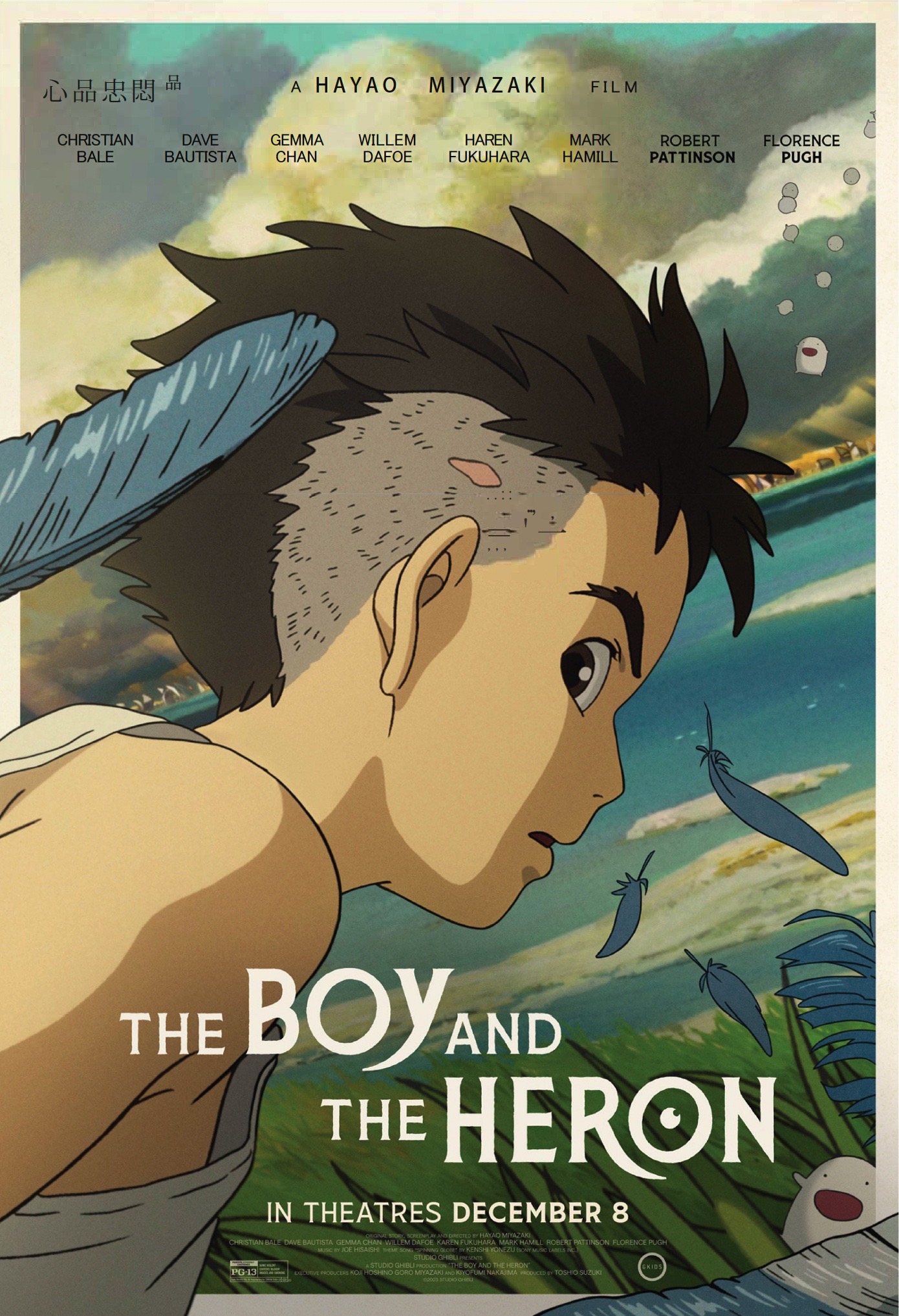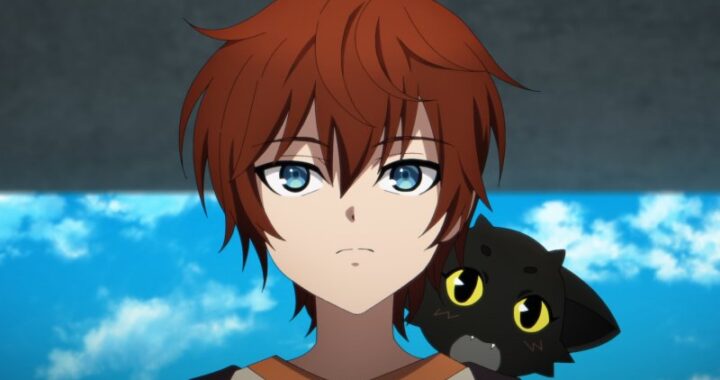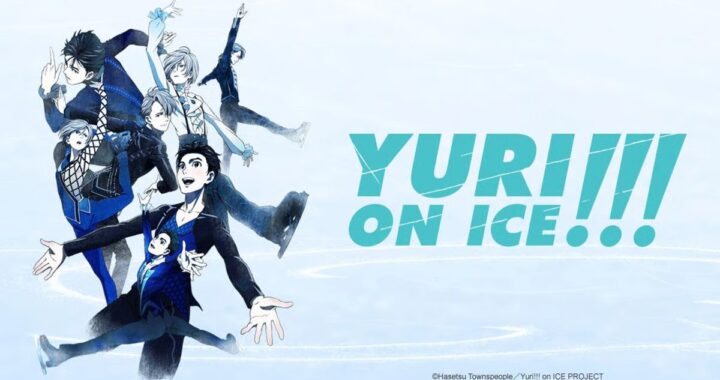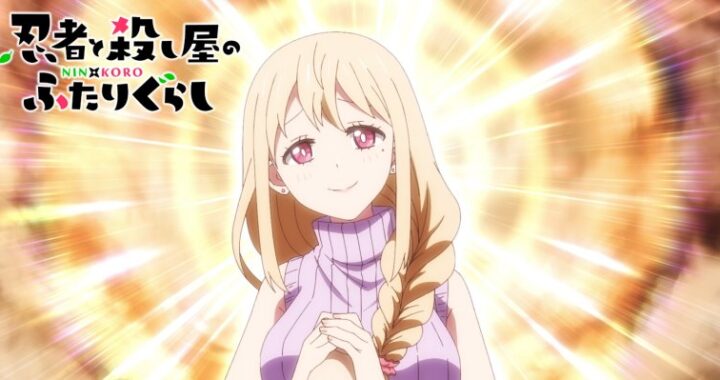 Ten years after his last film, Miyazaki returns with a new film that does me in.
Ten years after his last film, Miyazaki returns with a new film that does me in.
What They Say:
From the legendary Studio Ghibli and Academy Award®-winning director Hayao Miyazaki (Spirited Away) comes a critically acclaimed fantasy adventure. After losing his mother during the war, young Mahito moves to his family’s estate in the countryside. There, a series of mysterious events lead him to a secluded and ancient tower, home to a mischievous gray heron. When Mahito’s new stepmother disappears, he follows the gray heron into the tower, and enters a fantastic world shared by the living and the dead. As he embarks on an epic journey with the heron as his guide, Mahito must uncover the secrets of this world, and the truth about himself.
Featuring the voices of Christian Bale, Dave Bautista, Gemma Chan, Willem Dafoe, Karen Fukuhara, Mark Hamill, Robert Pattinson and Florence Pugh.
The Review:
Audio:
The audio presentation for this release brings us the original Japanese language and the English dub in 5.1 using a couple of different formats in general and we listened to this in the Japanese Atmos format. This is naturally a very well-done mix that captures a lot of the overall surround action in a great way with a good bit of bass to it where needed thanks to the action as well. A lot of this film is quiet and introspective but that allows the smaller sound design to shine well from ambient effects to the placement of dialogue. The result is something that had a natural and warm feeling to it while handling movement across the screen wonderfully. The big action sequences deliver in a strong way with all the impact and feeling I expected from it and made for an engaging viewing. We didn’t have any problems during playback at all.
Video:
Originally released in 2023, the encoding for this film is presented in its original aspect ratio of 1.85:1 in 2160p for 4k displays. Animated by Studio Ghibli, is an incredibly strong presentation on so many levels and utilizes several different approaches that are all captured well. The “traditional” look of the film throughout much of it is beautifully rendered on the screen with so much detail and such a great display of color that it can be easily captivating to watch unfold. It’s impossible to isolate a favorite overall but I’m continually drawn to the shots involving water in particular with how they move and look. It’s so rich and clean throughout and just draws you in with what it does. That’s not to say I love every element of it, especially early on as there’s some playing with the camera movement and animation style that felt awkward, such as when all the old women were moving through the house after Mahito first arrived as it had a “modern” look that felt incredibly out of place.
Packaging:
The packaging for this edition is a standard black Blu-ray case that holds the two separate disc formats inside and it comes with an o-card that largely replicates the case artwork. The front cover is the familiar piece of Mhaito with the feather moving across the land and I do like the colors of it but it’s one of those covers that doesn’t say anything about the project itself. Which, to be fair, prior to its original theatrical release in Japan they didn’t even release much in the way of information and trailers because they wanted people to go in with as little knowledge as possible. This cover kind of does that. The back covers are similar but with the case itself providing more real technical information about the discs. We get a decent selection of shots along the top, a brief summary of the concept behind the film, and a breakdown of the extras. The slipcover goes for logos while the base breaks down the technical and adds some of the production credits as well. The set also comes with a nice six-panel foldout poster and a small booklet that’s more pictures than anything else but does have a few notes and bits of information about the film.
Extras:
While we watched the 4K release, the included Blu-ray is where all the extras are kept which is a frustrating thing since I dislike swapping discs and it took me a few days to get back to it because of that. The release is, admittedly, standard Ghibli extras where we get the storyboard version of the film and a few different interviews with the definitely much older crew that has been producing the Ghibli film library for a long time. There are interesting tidbits to it at times but after seeing so many of these over the years and the nods towards Miyazaki’s work habits, they’ve lost their allure. We also get a fun music video and a good if small collection of teasers and trailers to round things out..
Though it’s not the best entry into the world of Miyazaki, I still have fond memories of finding a VHS tape of Warriors of the Wind in a rental store in the mid-80s and enjoying the hell out of it. That eventually led me to finding out about the Castle of Cagliostro and then onto Studio Ghibli works proper. I spent a lot of the 90s in the Boston area going to various showings and festivals to see every film released at that point on the big screen and the magic of the Princess Mononoke wider theatrical release. I’ve owned so many editions of so many of the films over the years and love seeing new versions come out and finding new fans. Like a lot of anime fans, I’ve introduced the Studio Ghibli world to many and enjoy that thoroughly.
I also remember getting a lot of criticism for not liking Spirited Away when it was released and how long it took me to come around on that film, almost a decade later. Thankfully, I fell in love with Howl’s Moving Castle and Ponyo along the way and had a complicated relationship with The Wind Rises when that came out. And now, a decade after that film, I find myself back in a Spirited Away kind of feeling because I struggled hard with this film. So much so that I stopped it at the halfway mark and gave myself a day before trying to go back and finish it. While the film has been out for a year in Japan and had theatrical releases, I’ve managed to read almost nothing about it or know much about it so I was able to go into without much in the way of views beyond knowing it was very critically acclaimed.
The film takes place in the early days of Japan’s involvement in the Pacific War and introduces us to Mahito, a boy who has lost his mother in a hospital fire and is struggling with that loss. Something like a year after that as the war spread, his father married his wife’s sister, Natsuko, and because he owns a munitions factory, they end up going out to the countryside where Natsuko has an old family estate. It’s close to the factory as well and Mahito’s father is basically working there constantly in order to support the war effort. For Mahito, the whole situation just feels weird in coming to this place, still believing that his mother may be alive in some way, and the fact that his father married his aunt that he had never met and she’s now pregnant. And having them come to this old estate, where there are also some more modern buildings on the ground, just feels surreal.
Mahitto is very much welcomed by everyone, which is Natsuko and a gaggle of pint-sized old women who help run the household and a few other people. We see how Mahito tries to settle into things but he’s self-destructive, such as when his father drives him to school to show off and we see Mahito getting into a fight with other kids who basically work the fields once out of school. He works to get himself kept out of school but even bludgeoning himself later with a rock but plays stoic in not naming anyone even as his father rages over it. It’s a familiar vision of boyhood in a lot of ways and I’ve known many kids from my youth that were the same way. Even myself at times. It’s easy to see why Mahito keeps his distance from others and isn’t sure about his place in the world. Plus, there’s a gray heron on the property grounds that keeps coming to his window and aggravating him in general.
Where the film goes into the traditional weird territory we get with a Studio Ghibli work is in regard to an old sealed tower with stories of mystery related to Natsuko’s great uncle who disappeared and was obsessed with it. With stories of it being something that crashed into the world and had a human tower built around it, what draws Mahito to it is that the Heron starts speaking to him and telling him that within it is where his mother has been taken. There’s a lot of back and forth on this until Mahito gains an edge over the Heron by taking one of its feathers, but eventually, it’s a journey into this other world with all of its mystery and wonders while Mahito works to find out more about his mother and to try and save her.
And while I totally understand why it works for so many people, so much of this film and the things we find within it just feel like copies and homages to what Miyazaki has done before and pale imitations a lot of the time at best. I completely get the narrative and intent behind it but it simply wasn’t compelling to me and just felt like it was so languid in how it was operating. It’s filled with that dreamlike wonder where you feel like you’re waiting for that sequence where Mahito wakes up and it was all a dream and now he just does the right thing. But it moves into deeper and stranger territory along the way that operates on its own logic – which is fine – but without engaging characters to connect with. The Heron just rubbed me the wrong way for most of it, the parakeet kingdom characters did nothing for me, and while Himi had some interesting moments the local fisherwoman named Kiriko who helps others in the world had some neat moments, I just didn’t care about a single character in this beyond Natsuko. And even then only barely because of the uncomfortable situation of her marrying her sister’s husband a year after her sister died in a tragic fire. It’s not unheard of but it’s just such a weird beat to take.
In Summary:
Similar to a few other Miyazaki films over the years, this is one that’s going to take some time and repeat viewings to see if I end up “getting it” and finding a connection with it. It took a long time for Spirited Away to connect for me and there are a lot of complicated feelings with The Wind Rises. I can appreciate everything about this on a technical level, and the UHD release is absolutely gorgeous, but this is the Miyazaki film that to me felt the least original and more just pulling even more fully from past works than anything else. It’s not poorly made or anything, but it simply didn’t resonate or click with me and the more I watched the more it became a slog to get through while waiting to see if it would suddenly click. Fans of the film get an absolutely gorgeous release here and there are a few packaging options out there beyond this release and I’m sure we’ll see more in the future. I’m definitely curious to see how revisits in the years to come will have me reshaping my opinion.
Features:
English Dolby TrueHD Atmos, English AD Dolby Digital 5.1, Japanese Dolby TrueHD Atmos, Spanish Dolby Digital 5.1, English Subtitles, French Subtitles, Spanish Subtitles, Feature-Length Storyboards, Interview with Composer Joe Hisaishi, Interview with Producer Toshio Suzuki, Interview with Supervising Animator Takeshi Honda, Drawing with Takeshi Honda, “Spinning Globe” Music Video, Teasers & Trailers
Content Grade: C+
Audio Grade: A
Video Grade: A+
Packaging Grade: B+
Menu Grade: B
Extras Grade: B+
Released By: GKIDS
Release Date: July 9th, 2024
MSRP: $39.99
Running Time: 124 Minutes
Video Encoding: 2160 4K
Aspect Ratio: 2:39:1 Widescreen
Review Equipment:
Fire QL75F601A 75″ QLED 4K HDTV, Sony PlayStation5, VIZIO V-Series 5.1 Home Theater Sound Bar V51x-J6



